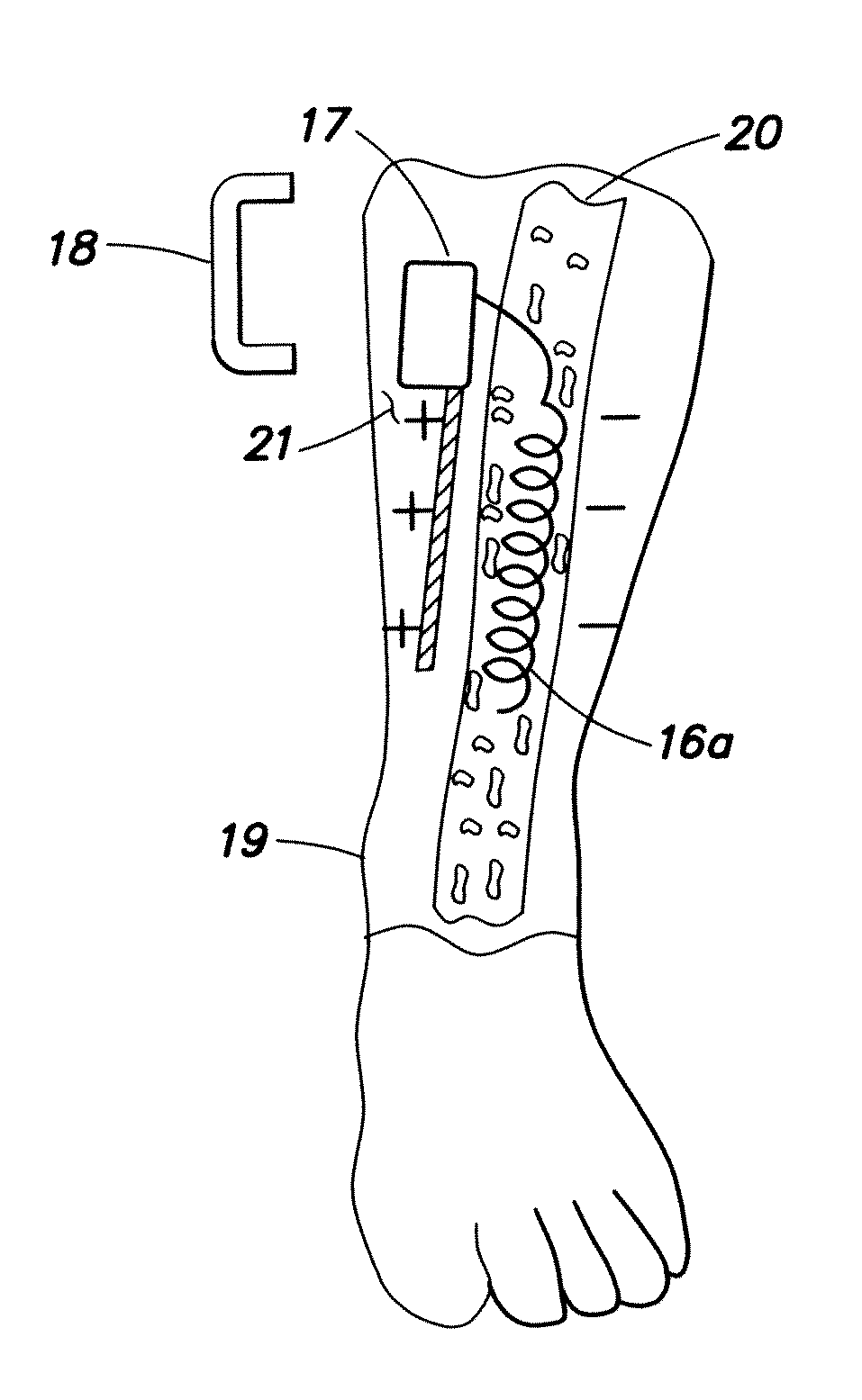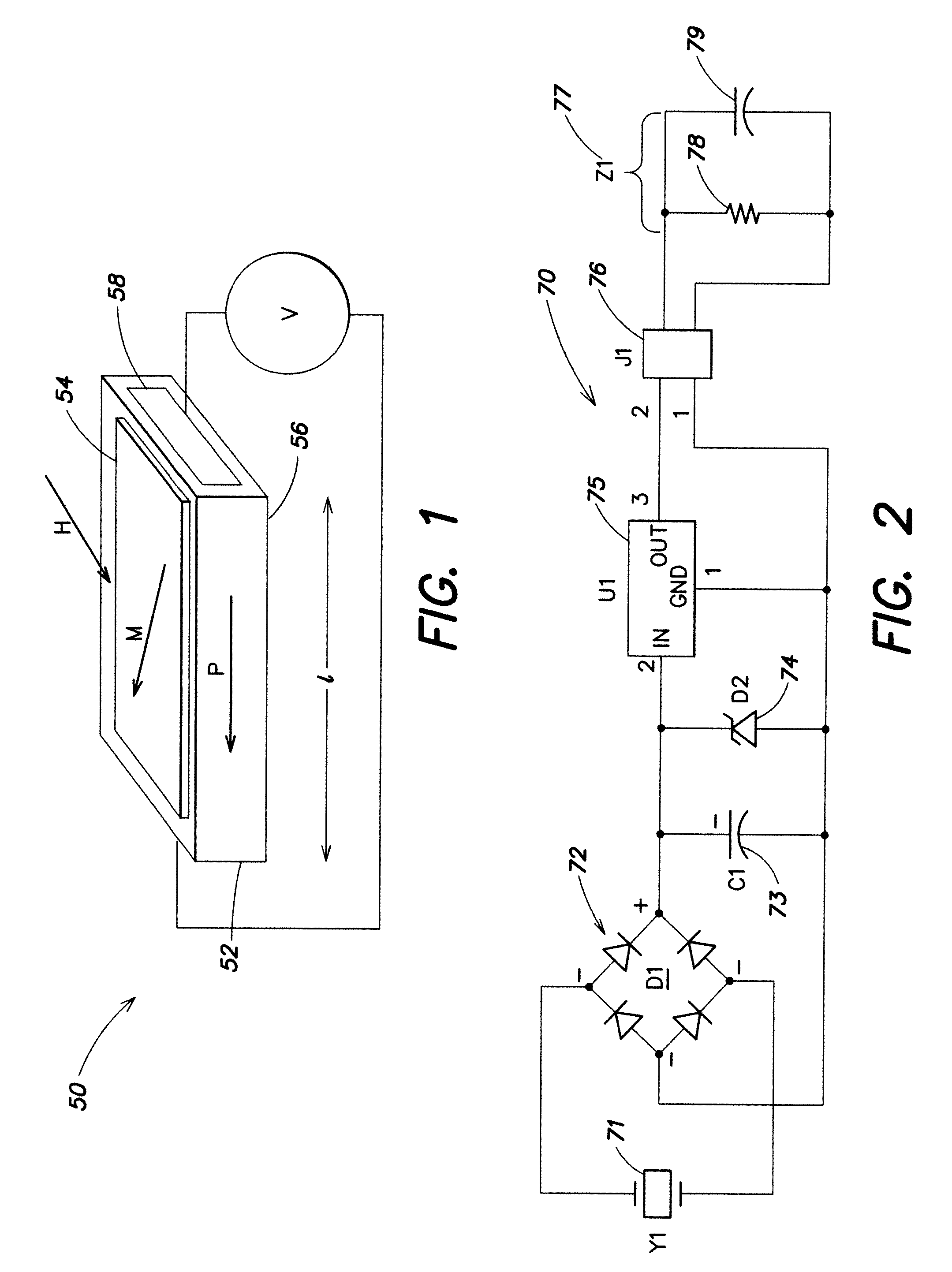Systems and methods for delivering electrical energy in the body
a technology of electrical energy and systems, applied in the direction of generators/motors, magnetic properties, therapy, etc., can solve the problems of bone death, large amount of energy stored by cells, surgical procedures for implanting electrodes, etc., to reduce the cost, the effect of minimal invasiveness and minimal surgical time and possible errors
- Summary
- Abstract
- Description
- Claims
- Application Information
AI Technical Summary
Benefits of technology
Problems solved by technology
Method used
Image
Examples
first embodiment
[0201]In the first embodiment shown in FIG. 15, an internally disposed (within the bone 20) coil-like electrode 16a is connected to one electrode of a laminated magneto-electric power receiver 17, the receiver being implanted in soft tissue 21 near the fracture site. The implant 17 includes the ME receiver integrated with a power conditioning chip and a short-term (possibly 1 week) rechargeable cell. Whereas a prior art primary storage cell can typically last up to 9 months, continuously delivering 20 μA at about 1 V, it has a capacity of a few tenths of a Watt-hour (W-h). In contrast, the rechargeable cell used in the present embodiment need only supply about 20 μW for a week, so the rechargeable cell (in implant 17) need only have a capacity of a few milli Watt-hours (mW-h); as a result it can be about 1% of the volume of the prior art implanted cell. The rechargeable cell of the present embodiment has a rate of energy transfer of about 0.3 W using safe AC magnetic field levels; i...
second embodiment
[0202]In the second embodiment shown in FIG. 16, a stabilizing rod 16b implanted in the bone to maintain alignment and provide stabilization during healing also functions an electrode (instead of coil electrode 16a of FIG. 15). The statements made above for FIG. 15, with the exception of the last statement regarding use for vertebral fracture, also apply to FIG. 16. However, because (in FIG. 16) there may be a larger area between the electrodes (based on the length of the fracture), a larger voltage may need to be applied to the electrodes to maintain a constant charge on the electrodes and E field strength at the fracture (see Eq. 1).
[0203]In regard to the third embodiment (FIGS. 17-18), in cases of severe bone fracture there are often metal fastener(s) placed in the bone, or a metal clamp connecting two stabilizing braces along the length and on opposite sides of the bone. The metal fastener(s), e.g., a screw 25 or bolt 26, can be manufactured in two electrically-insulated parts (...
PUM
 Login to View More
Login to View More Abstract
Description
Claims
Application Information
 Login to View More
Login to View More - R&D
- Intellectual Property
- Life Sciences
- Materials
- Tech Scout
- Unparalleled Data Quality
- Higher Quality Content
- 60% Fewer Hallucinations
Browse by: Latest US Patents, China's latest patents, Technical Efficacy Thesaurus, Application Domain, Technology Topic, Popular Technical Reports.
© 2025 PatSnap. All rights reserved.Legal|Privacy policy|Modern Slavery Act Transparency Statement|Sitemap|About US| Contact US: help@patsnap.com



